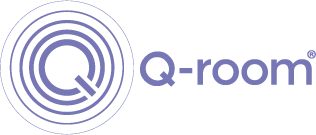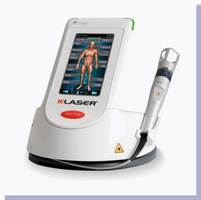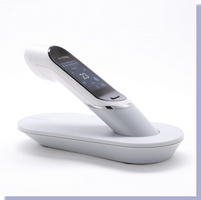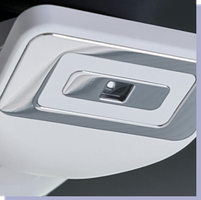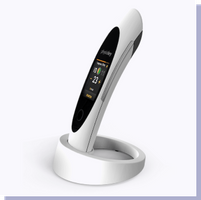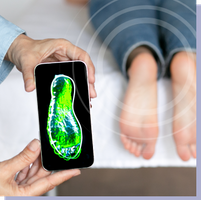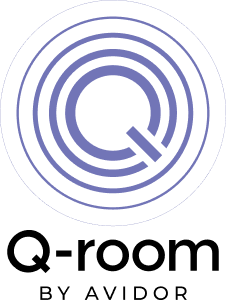Herniated Disc Treatment with Advanced Technology to Eliminate Pain
65% of people suffer from problems with a slipped or herniated disc in the spine. The reason: excessive sitting in the office or in the car and lack of proper physical activity. In many cases, disc problems go unnoticed for many years – before they erupt with full force. So how do you treat them? Advanced technologies help reduce pain and aid recovery
What is a herniated disc?
The disc is the cushion that separates one vertebra from another in the spine and acts as a shock absorber to prevent damage to the vertebrae and their wear. The disc is made up of a soft, gel-like core and a tough fibrous shell. Pressure on the disc can cause one of the following symptoms:
- Disc bulge – the shell protrudes outside the spine.
- Herniated disc – the shell weakens over the years and the soft material penetrates into the fibers.
- Disc herniation – when the shell cannot withstand the load and tears, and the soft material bursts through the tear and spills out.
These conditions usually occur in the lumbar spine, which bears the majority of the body’s weight, but they can also occur elsewhere in the spine (such as the neck). This can put pressure on nearby nerves, causing pain, numbness, or weakness, especially in the lower back, neck, arms, or legs.
Causes of a herniated disc
Age-related degeneration : Over the years, the discs in the spine naturally lose some of their fluid content, lose their elasticity, and are more likely to crack or tear (“disc degeneration”) – one of the most common causes of a herniated disc.
Injury or trauma : An injury to the spine, such as a fall, car accident, or sports injury, can cause a herniated disc. If the disc is weak, even a slight movement, such as bending or twisting, can cause a herniated disc.
Lifting weights incorrectly : Lifting objects incorrectly, especially with your back instead of your legs, can put increased pressure on the spine and lead to a herniated disc.
Repetitive motion and sustained strain : Jobs or activities that involve repetitive lifting, bending, twisting, or pushing can strain the spine over time. The result is that the discs weaken and become more susceptible to rupture.
Genetic predisposition : In this case, people may have weaker disc structures or be more prone to degenerative disc disease, which can lead to a herniated disc.
Obesity : Excess weight puts strain on the spine, especially in the lower back, and thus increases the risk of a herniated disc. Excess weight also increases pressure on the discs, which can lead to their degeneration more quickly.
Sedentary lifestyle and poor physical condition : Weak back and abdominal muscles can lead to poor posture, which puts more pressure on the discs in the spine. A sedentary lifestyle (prolonged sitting) can also cause stiff and inflexible discs, which increases the likelihood of disc damage. This is true for both those who sit in an office for long hours and those who drive long hours, as the combination of prolonged sitting and vehicle vibrations can increase pressure on the spine.
Smoking: Smoking reduces blood flow to the discs, impairing their ability to receive the nutrients they need for health. The reduction in blood flow can speed up the degeneration process.
Herniated disc treatment
Conservative treatments
Most herniated discs can be treated with nonsurgical approaches, especially if symptoms are mild to moderate. These include:
Rest and gentle exercise : Rest can reduce stress on the spine. Doctors also recommend sticking to low-intensity exercise.
Physical therapy : Physical therapy strengthens the muscles around the spine, improves flexibility, and supports proper posture. It can include stretching, core strengthening, and aerobic exercises.
Painkillers : Nonsteroidal anti-inflammatory drugs can help reduce inflammation and pain. If these are not helpful, your doctor may prescribe stronger painkillers.
Alternative therapies : Acupuncture, chiropractic, and massage can be beneficial when used alongside medical treatments.
Prevention and recovery
To prevent a herniated disc, it is recommended to maintain a healthy weight, practice proper posture, avoid heavy lifting, and engage in moderate and appropriate physical activity. With the right treatment plan, most people experience significant improvement within a few weeks to months.
Herniated disc treatment by specialists
The innovative Q-room treatment room provides a focused and rapid response to pain and is based on precise and direct technology for pain treatment , using a variety of innovative devices developed in Germany. The treatment is done in a few single sessions, by certified physiotherapists with extensive knowledge in diagnosing and identifying pain mechanisms.
The MEDKEY technology treatment for herniated discs in Q Room involves electrical nerve stimulation on the skin, targeting the painful areas. The electrical stimulation works by blocking pain signals sent to the brain, and helps release chemicals in the central nervous system, such as endorphins, which act as natural painkillers, making it easier for the patient to move. This release makes it easier to continue treatment through exercises to improve range of motion and strength.
The treatment also helps relax muscles around the affected area, which speeds up improvement in back and neck movement. Treatment for a herniated disc also increases blood flow to the treated area, which improves the supply of oxygen and nutrients to the damaged tissues and helps the body begin the natural healing process.
If you also suffer from a herniated disc or a bulging disc – call 076-5995884 to schedule an appointment and get advice.
